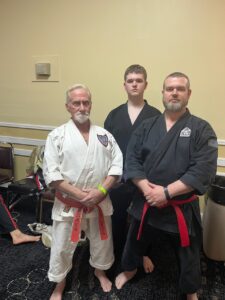Every shot should kill a gobbler

Photo courtesy of Steve Sorensen If you miss a gobbler, it’s probably not because of the shell you shoot.
The big gobbler was down on the bench, just below me. He answered every call, but was heading away from me. What next? It’s time to reposition. A few minutes later I resumed calling from a new set up in front of and above him. I offered a few sharp yelps, and he responded immediately and aggressively. Then, from down on the bench, Booooomm!
I never heard a hunter calling down there, so he must have been using soft purrs and clucks. I stood up, eased over to the edge of the hill and watched him throw his shotgun to the ground in disgust. After walking down to him I asked, “What happened?” He said he did everything right. The bird was in range, standing still, with his head up, but the guy missed. “How close?” I asked.
“Fifty yards, dead to rights!” the hunter replied. “Too bad,” I said. I left him to his misery and thought to myself. “Fifty yards? No wonder he missed.”
That was long before TSS loads, HEVI-Shot, and precision choke tubes. With all that, hunters still miss turkeys. And it boils down to the same two reasons: the bird is too far away, and we get excited.
I shoot cheap Remington 3½-inch Plain Jane shells with the meaningless but promising brand name “Nitro Turkey.” (Got ’em on sale at Walmart.) The recoil hits me like Freight Train Jane, which I don’t like much. I’ve heard lots of hunters say, “Nitro Turkey” are lousy shells, but after shooting 20 or so at gobblers’ heads — with that many dead gobblers — I don’t believe we miss turkeys because our shells are inadequate.
True, some loads are better than others, especially better than the 2¾-inch shells we shot 50 years ago, but they all do their one job if we do the jobs that are ours. And our first job is to learn how the shell we choose performs in our shotgun before we go hunting.
Back in ’74, I almost missed the first gobbler I ever shot at. I was using Dad’s Ithaca 12-gauge double barrel, and the bird was 40 yards away. I had no idea what kind of pattern that shotgun threw, but a Number 4 from the 2¾-inch shell I was using somehow found its way into the bird’s naked head. That shotgun, I’ve since learned, throws a terrible pattern no matter the shell. If I ever use it again, the gobbler better be at 20 yards or closer.
Once we know we’re shooting a dense pattern, our next job is to make sure he’s close enough. Range estimation is a critical factor in all hunting, but trajectory is not the issue when shooting at the stationary head of a gobbler. What counts is pattern density, and the farther away the turkey is, the less dense the pattern is, and the less energy the pellets have. So, call him close.
How close is close? No matter what I’m shooting, I never shoot at a turkey if I think he is more than 35 yards away. Why? Because it’s easy to make a 20% mistake in range estimation. A 20% mistake on a turkey I judge to be 35 yards away means he’s really 42 yards away. I prefer closer distances, but I don’t shoot at greater distances because a 20% mistake only gets bigger.
If that hunter who missed at 50 yards made a 20% mistake, that bird was really 60 yards away. And the farther away the gobbler is, the more likely you won’t notice a sapling or a bit of brush between you and the gobbler, which further reduces your chances of killing the turkey.
With the turkey close, your stress level rises as you wait for the best shot. Your adrenal glands pump a powerful hormone into your bloodstream through a fire hose. It’s why turkey hunting is exciting.
How do you decrease the excitement? Why would you want to? It was exciting when Babe Ruth, with Cubs players mocking him from the dugout in the 1932 World Series, pointed to the center field wall at Wrigley Field. One reason star athletes are effective is that they control the excitement. Did you know the Bambino was a turkey hunter? Maybe he learned controlled excitement in the turkey woods, and it paid off in the batter’s box.
A dense pattern, a turkey that’s close, and controlled excitement — that’s a kill every time.
***
When “The Everyday Hunter” isn’t hunting, he’s thinking about hunting, talking about hunting, dreaming about hunting, writing about hunting, or wishing he were hunting. If you want to tell Steve exactly where your favorite hunting spot is, contact him through his website, www.EverydayHunter.com. He writes for top outdoor magazines, and won the 2015, 2018 and 2023 national “Pinnacle Award” for outdoor writing.
Photo Support: WhyWeMissTurkeys.jpg
Caption: If you miss a gobbler, it’s probably not because of the shell you shoot. (Photo courtesy of Steve Sorensen)




